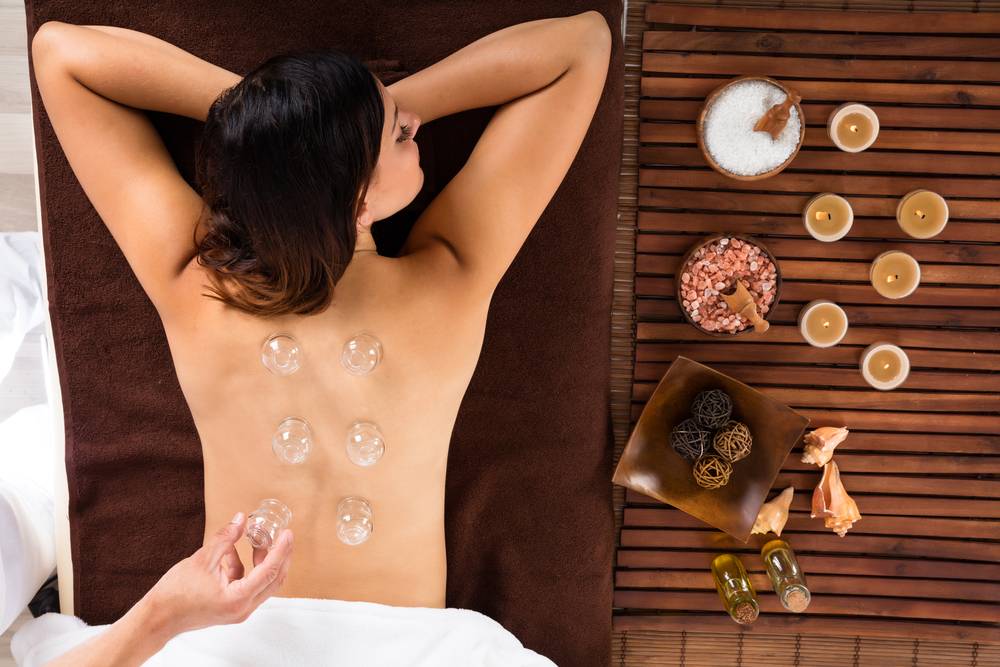
Taking alternative therapy and treatments into consideration can elevate your level of care and wellness in your quest to be the better and more improved version of you.
One of the more popular procedures, cupping therapy, used by the likes of reality star Kim Kardashian-West and Olympic swimmer Michael Phelps, claims to offer all sorts of health benefits.
If you’re deciding if cupping therapy is the best type of treatment for you and your needs, this article will provide all you need to know about what it is, how it works, and what it has to offer.
What is Cupping Therapy?
Originated from traditional Chinese medicinal practices, cupping therapy involves the use of special rounded cups to create suction points on the skin for brief periods of time.
In Chinese medicine, it is said to stimulate the flow of chi and correct any energy imbalances caused by injuries or illnesses. In contemporary practice, it can increase blood circulation in the areas the cups are placed, relieving muscle tension and promoting cell repair.
Currently, there are two types of cupping therapy: dry and wet cupping. Dry cupping involves the suction process on its own or sometimes combined with massage, acupuncture, or other alternative therapies. Wet cupping is very similar, except that small incisions are made on the skin to drain the blood from the suctioned areas.
What are the Health Benefits of Cupping Therapy?
Because of its ability to increase blood flow through a vacuum effect, cupping therapy is mainly used to relieve sore muscles and encourage healing. If you suffer from pain in your back, neck, and knees, as well as muscle pains or sports injuries, cupping therapy can be a good solution.
Cupping therapy is also used to treat other illnesses like headaches and migraines, skin conditions like acne and hives, shingles, facial paralysis, varicose veins, and lumbar disc herniation. Proponents of cupping therapy also argue that the increased blood flow makes it ideal for lowering blood cholesterol levels, boosting the immune system, and managing anxiety, depression, and insomnia.
Determining how frequently you may need to have cupping therapy will depend on the kind of treatment you’re looking for—soothing sore muscles, maintaining your overall health, treating a long-term illness, or any other condition. Consult with your therapist on how many sessions you’ll need to best address your concerns.
Due to the nature of cupping, it’s essential to know that this treatment should not be attempted on the skin that is broken, irritated, or inflamed. People with blood-related health conditions, cancer, organ failure, and certain types of heart disease, as well as those taking blood-thinning medication, should not receive cupping therapy.
What to Expect from a Cupping Therapy Session?
During a cupping therapy session, a cup is placed on the skin then heated to create the vacuum effect and effectively suction onto the surface. The cup is heated with fire using alcohol, herbs, or even paper directly placed into the cup.
The fire sources are removed, and the heated cup’s open side is placed directly onto the skin. Some contemporary practitioners instead use rubber pumps to create the suction rather than the traditional heat methods.
Once the hot cup is placed onto the skin, the air inside the cup is cooled for about 3 minutes. This creates the vacuum, drawing both skin and muscle upward into the cup and causing the skin to redden as the blood vessels expand.
Some therapists may also perform “flash” cupping, or the rapid attachment and removal of the cups to create a massage-like effect.
In a wet cupping session, the general process is the same up until the removal of the cups. Once removed, the therapist uses a small scalpel to create light and small cuts on the suctioned skin. Following this, they do another round of suctioning to draw out a small amount of blood.
After all the cups are removed, these areas are covered with ointment and bandages to prevent infections. A common side effect from this treatment is the development of bruising and other marks on the cupped areas, which will disappear within ten days.
Other side effects of cupping therapy include dizziness, lightheadedness, swelling, pain, skin pigmentation, nausea, and burns. Scarring may also occur, especially after wet cupping sessions. Consecutive sessions may worsen these side effects.
Conclusion
Cupping therapy is a long-standing alternative treatment that aids in providing relief for both temporary and chronic health conditions. It is often considered as the inverse of massaging—instead of pushing muscles down, they are drawn up into the cups. The result is a unique sensation with a variety of health benefits to boot.
If you’re not squeamish and won’t mind a few odd marks on your skin, consider adding cupping therapy to your wellness routine. As with all alternative therapies, it’s best to use these to complement your doctor visits and medical treatments.
You may also like
Alternative Methods for Chronic Pain Relief
7 Reasons Sleep Is Key to Your Mental Health
Does Massage Therapy Help Reduce Anxiety?
